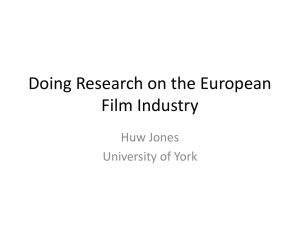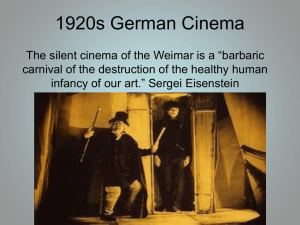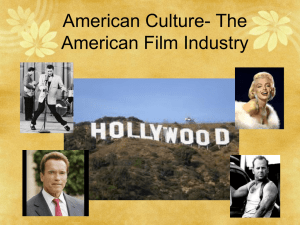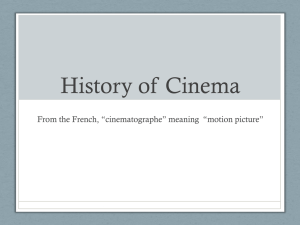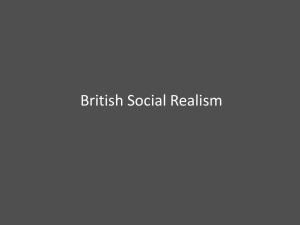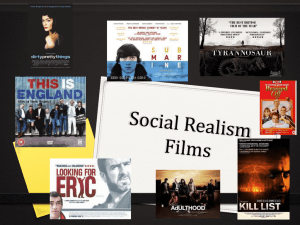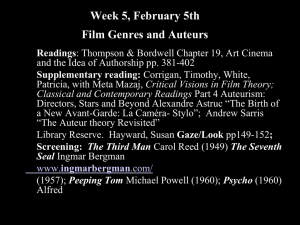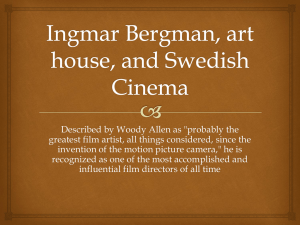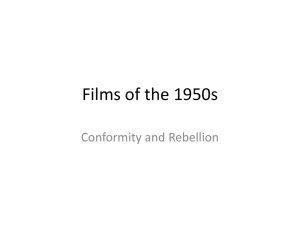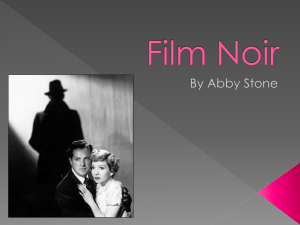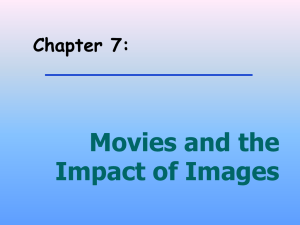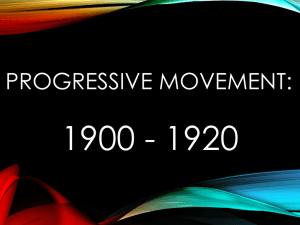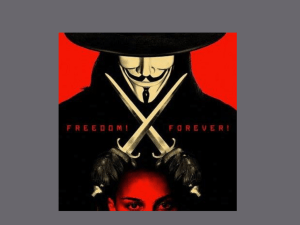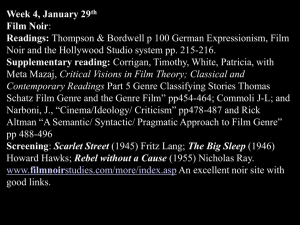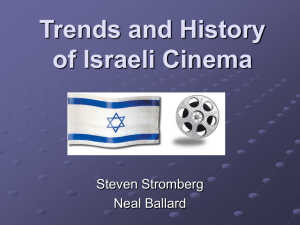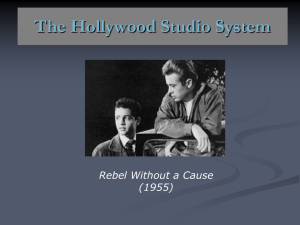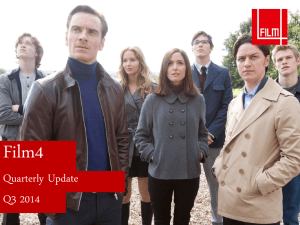Social realsim powerpoint
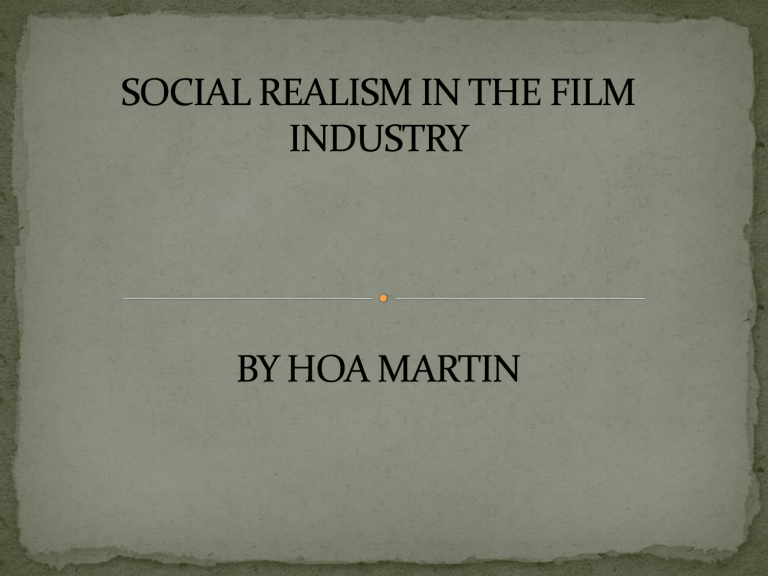
Social realism in films is representative of real life, with all its difficulties. The stories and people portrayed are everyday characters, usually from working class backgrounds. Typically, films within the social realist canon are gritty, urban dramas about the struggle to survive the daily grind. The majority of social realism films are BRITISH. Realism is a STYLE which aims to represent the ‘real world’ honestly and accurately and is central to definitions and discussions of British Cinema. (Wikepedia.com) http://www.bbc.co.uk/britishfilm/ This is a link of famous British film, and there being a wide variety of social dramas.
Above is a video of celebrities talking about social realism in film.
Social realism film is stereotypically based around working class people, so the decoration in the film would be in this kind of setting - eg. ‘This is
England’ is based in council estates.
We could film our trailer somewhere similar or something that represents a lower working class; outside McDonalds, in a well known dodgy area etc.
The lighting will usually be quite neutral - not too much sun or bright lights as it connotes happiness, so a dim day with not a lot of lighting, but enough to be able to see what’s going on in the clips.
The space will usually be quite empty, it can change between a big and small space but always stereotypically rather empty. The clothes will be plain and simple and not have that much patterns or eccentric colours.
My group are thinking of doing lots of shots of travelling, on a train or a bus. We want to do this to represent how far our working class character has to get to the place they need to - this could be because they live in a far away, poorer area than where they need to go to.
We will put them in plain clothes, kind of stereotypical clothes eg.
Tracksuit from Sports and Soccer etc for male and leggings and kind of stereotypical Primark clothes. T he acting will be professional and dramatic portraying a difficult life of real circumstances of rape, race, class, age, gender, disabilities etc.
SHANE MEADOWS (This is England)
BAFTA winner. Directed 12 fims and written 11 films. Ranked number 40 in “The most powerful people in
British culture” in The Telegraph
2008. Quote: “When I am not happy with my work, I am like Marlon
Brando in Apocalypse Now.”
KEN LOACH (Diary of a Young Man)
He was made a Fellow of the British Film Institute of his contribution to film and television culture. Quote:
"Stalin has caused
Socialism greater damage than anyone else."
STEPHEN DALDRY(Billy Elliot)
Awarded commander of the British
Empire in 2004 for his service to
Drama. His major film went to the west and was he was awarded Broadway's
2009 Tony Award as Best Director.
Quote:"One of the great things about directors is how collegial we feel with each other. We share huge amounts - I get other directors in to see my work all the time and they do the same with me.
It's a very warm and generous group of people."
DANNY BOYLE (Slumdog Millionaire)
Usually uses a kinetic camera, his openings usually begin with shots from the middle of the film. Is one in 7 directors to get a Golden Globe.
Quote: I learned that what I'm better at is making stuff lower down the radar. Actually, ideally not on the radar at all.
Blue Scar (1949)
Miner's daughter leaves her small Welsh village and her sweetheart, to take up a singing scholarship, and eventually marries a collarand-tie man. Directed by Jill
Craigie.
Burning an Illusion (1981)
A story about a young black woman questioning her life and going through racial inequalities and difficulties.
Directed by Menelik
Shabazz.
Fish Tank (2009)
Set in a modern society, a story of 15 year old Mia growing up and struggling with her working class family and desperately trying to find romance but finding nightmare. Directed by Andrea
Arnold.
Bronco Bullfrog (1969)
A black and white movie set in London
Stratford directed by Barney Platts-
Mills about young lovers fighting to stay together, where the only place they are able to spend time together are bomb sites. Also about friendship.
This is England (2006)
Directed by Shane Meadows, about a group of friends struggling with racism and inequalities through the 1980s – the time of skinheads and punks.
Political – Margaret Thatcher referenced. A very violent, graphic and emotional experience. Portrays extreme working class.
LONDON TO BRIGHTON (2006)
PAUL WILLIAMS
BRONCO BULLFROG (1969)
BARNEY PLATTS MILLS
I chose 'Bronco Bullfrog' (1969) and 'London to Brighton' (2006) because they have a massive difference of 37 years. There is a large difference of the colors, for example black and white compared to usual color. Lighting, Mise
En Scene, Violence
We are introduced to the main character in her council estate, we immediately make judgements and stereotypes about her, for example; "chav", "pikey" and
"towny" is a typical thing someone would say about her, backing up the 'working class' characters for soical realism films. The costume fits into the person she's presented to be; the gold necklaces, hoop earings and rings. The trainers, bags and tracksuits . The rebellious lonely teenager. However, there are things to show that the chavvy person she is made out to be is different to who she actually is - an example of this is the insense in Mia's room shows an inner hippy. The touching of her nose continuously suggests the usage of drugs. I think Mia is a big animal carer, and her favorite animal is a Tiger - as we figured out from the dialogue and the pictures on her wall etc. I think they chose this to be her favorite because it portrays her inner self - a fiesty, fiery person. She shows at one point the contraceptive pill
Cerazette; presenting herself as a young sexually active person (before the sex scenes). Not only is this pill for contraception, but for helping Migraines as well, which could make the audience question could this pill be because she lives in a head hurting environment. Why has Mia got bruises on her arms? The fact that Mia can't swim is a sign of not being cared for and taught properly when younger.
Other things that represent the working class image throughout the film.
- Council estate
- Internet cafe to use the internet
- Cheep booze
- Caravans
- Saucepan on stove for tea suggests not enough money for a kettle
- Underage drinking
- Violent reactions
- Very young smokers; for example, Tyler (the young sister) and her friend
- No school?
- Violent parenthood
They chose to use the child Kira because it makes it all more emotional for the audience to witness. The outfit was Where's the dad? The mother looks almost prostitute looking - blonde, skanky, dirty and very short, tight/skimpy clothes. Conor drink drives, proving he is reckless. The accent of all of them apart from Conor is very stereotypical "chav". The colors used are really neutral greens, whites, lilacs, blues, yellows. There are such large family problems they have to be confronted by a social worker. There is actually quite a large contrast between the music used, for example; "California Dreamin" compared to
"Cassie" and "Life's a bitch and then you die" this backs up what she thinks life is about. There is no music over the top like in most films, but it's all music in the scene - diagetic.
The hidden message in Fish Tank is that the name symbolizes being trapped in a life she doesn't want. The balloon shot at the end could maybe symbolize the character Mia being released into freedom, as she is leaving and almost set free. Looking deeply into the characters, I thought maybe Mia is meant to be so different to the other daughter, Taylor and their mother and this is represented through the clothes they wear - Taylor and mother wear very lightly colored clothes, pinks and yellows and leggings, or skirts etc. Whereas Mia wears more boyish clothes eg. tracksuits etc. This is also presented through the blonde hair of the mother and sister compared to Mia's dark hair. I think the Freedom theme is also represented by
Mia wanting to help the horse - if she can't have freedom, the horse can - Mia being so touched by this horse suggests an inner caring person. Mia is yet again portrayed as different to everyone else by break dancing differently to the other dancers in the auditions.
Better than any other genre, social realism has shown us to ourselves, pushing the boundaries in the effort to put the experiences of real Britons on the screen, and shaping our ideas of what British cinema can be.
While our cinema has experienced all the fluctuations in fortune of
Hollywood's first export territory, realism has been Britain's richest gift to world cinema. In the years following the first World War, it was widely felt that the key to a national cinema lay in 'realism and restraint'. Workingclass audiences, it was said, favoured Hollywood genre movies.
Britain's contribution to cinema in the 1930s lay in a state sponsored in state documentary that would feed into the 1940s mainstream. Producer Micheal
Balcon revived the social distinction when he referred to the British industry's longstanding rivalry with Hollywood in terms of 'realism and tinsel'. In his position as head of Ealing Studios, would become a key figure in the emergence of a national cinema.
Combining the objective temper and aesthetics of the documentary movement with the stars and resources of studio filmmaking, 1940s British cinema made a stirring appeal to a mass audience.
Descendants of the realist flowering at the BBC in the 1960s, Ken Loach and
Mike Leigh assessed the impact of the consumer society on family life, charting the erosion of the welfare state and the consensus that built it. In the 1980s, publisher-broadcaster Channel 4 attempted to cultivate a cinema audience for realism.
Responding to the moralistic entrepreneurialism of the Thatcher years,
'Films on Four' My Beautiful Laundrette and Letter to Brezhnev (both 1985) followed characters from the margins as they attempted to stake a claim in the new order. Thanks to the relaxation of censorship, characters had sex lives, money worries, social problems. http://www.screenonline.org.uk/film/id/1037898/index.html
British 'auteurs' like Karel Reisz, Tony Richardson and John Schlesinger dealt with prostitution, abortion, homosexuality, alienation and relationship problems. Here were factory workers, office underlings, dissatisfied wives, pregnant girlfriends, runaways, the marginalised, poor and depressed. Historian Roger Manvell wrote: "As the cinemas [closed initially because of the fear of air raids] reopened, the public flooded in, searching for relief from hard work, companionship, release from tension, emotional indulgence and, where they could find them, some reaffirmation of the values of humanity." So there were many films based around this eg. "In Which We Serve".
• The New Wave was symptomatic of a worldwide emergence of art cinemas challenging mainstream aesthetics and attitudes. Identified with their directors rather than with the industry, the New
Wave films tended to address issues around masculinity that would become common in British social realism. http://www.screenonline.org.uk/film/id/1037898/index.html
• Championed by the incoming post-welfare new labour, 'The Full Monty' (1997) came to epitomise a new and entertaining conception of British social realism.
• Meanwhile, more lethal and complex representations of men and women appeared in Gary Oldman's autobiographical Nil by Mouth, 'Antonia Bird's Face' (both 1997), Shane Meadows 'A Room for Romeo Brass' (1999) and Carine Adler's Under the
Skin (1997), adding shade to our best hope for a truly national cinema.
• Touted in the British press as yet another banner year for British filmmaking, 2002 saw important new films from Loach -
Sweet Sixteen - Leigh - All or Nothing - and Lynne Ramsay - Morvern Callar, suggesting a national cinema with a genuine and vital commitment to the way we live.
• The New Wave protagonist was usually a working-class male without bearings in a society in which traditional industries and the cultures that went with them were in decline. Directors from
Ken Loach to Patrick Keiller, and films from 'Mike Leigh's High
Hopes' (1988) to 'The Full Monty' (1997) have addressed the erosion of regional and class identities amid a landscape rendered increasingly uniform by consumerism.
Film4
Is a free digital television channel available in the United Kingdom and Republic of Ireland, owned and operated by Channel 4 that screens films. Started trading in the 1970s Great
Britain, but changed its name in 2006 - re branded from 'FilmFour' switching from subscription to freeview (so you no longer had to pay for the channel when it got re-launched), when it got its design of 'Film4'. When this change was made it was less welcomed as expected because there were now commercial breaks. Over 40 productions! A well known example of one of Film4's films is 'Trainspotting'. Commissioning editor David Rose is generally able to offer £300,000 per project. Channel 4 also made significant contributions to film culture through its policy of regular screenings of minority-interest films. It was originally dedicated to screening the kind of arthouse/independent programming. http://www.screenonline.org.uk/film/id/1304135
Crown film unit
Used to be known as GPO Film Unit, but a few months into World War Two it was changed to a new name of the Crown Film Unit. Great Britain
1940 - 1952. The Conservative Government's decision to close the Crown Film Unit in 1952 attracted its share of controversy - which was opposed by the Labour party. Over 218 productions for example a well known one is 'The Cumberland
Story'.
http://www.screenonline.org.uk/film/id/469778/
Woodfall http://www.filmlinc.com/wrt/onsale
07/woodfall.html
Most recent film being in 1984 'The Hotel New Hampshire'. 25 productions. Started trading in 1958, Great Britain, formed by Tony Richardson. A well known example of one of Woodfall's productions is 'Saturday night and Sunday morning'. It was mainly used by young film makers who rejected the heavy handed voice over and clear social messages. They took advantage of new production techniques–– location shooting, natural light, from handheld cameras––to create a more vibrant sense of the texture of everyday life. According to John Osbourne, the purpose of Woodfall was "to show that good films, ones that showed British life as it really is, could be made cheaply."
The films produced by Woodfall often approached subjects (from interracial sex to schoolyard bullying) never before treated with such honesty.
We decided we wanted something fast and choppy changing, like a particular scene we watched in 'Hot Fuzz'. So we thought we could probably do something over transport, someone travelling somewhere. As a group we came to the idea of wanting to represent racial inequality, which is an important part of the social realism industry. We thought of a mixed race working class boy travelling from once place to another, getting bullied along the way. We thought maybe this boy on train or bus transport would be coming from an obviously dodgy area, getting bullied along the way to college or school, for example. But I thought that this would be a better idea for an opening of a film rather than a film trailer, so I came to the idea of a keeping what we already had but then adding to it...
This mixed race working class boy being in love with a white upper class girl, and their struggles of being together from their society. So for example, what their parents say and think about it, and their friends - and them getting bullied. I also thought that for more of a twist the boy could get into trouble with drugs. We could have shots of bags of Cocaine (obviously we'd use sugar) and pills (obviously we'd use paracetamol etc). And maybe, to keep it as a cliff hanger have the sound of a gun shot the end, as the boy getting in that kind of trouble is a big twist. We could also have clips of social groups responses of these 'star crossed lovers' trying to be together.
This is obviously a very faint idea and needs a lot of planning and adaptation, especially to the narrative to make it make more sense, but I really like my idea because it has more story to the original idea. If this goes to plan:
Elenoar/Elle - upper class white girl. Looks rich, wealthy clothes. Nice make up and hair, well groomed. Soft and light headed. A "good girl" no skin on show etc.
Daniel/Danny - mixed race working class boy, tracksuits and trainers.
When we distribute the film, we would want to use a company like Revolver
Entertainment. They would be interested in our film because it would pick up present issues. Aimed to be at 15 - 25 year olds because they are the most likely to go to the cinema and the main target audience for social realism films.
Above are some clips from 'Hot Fuzz'. I've put this in here to show the kind of "chopping and changing" clips we want to use - obviously with not as high standard and with completely different content.

